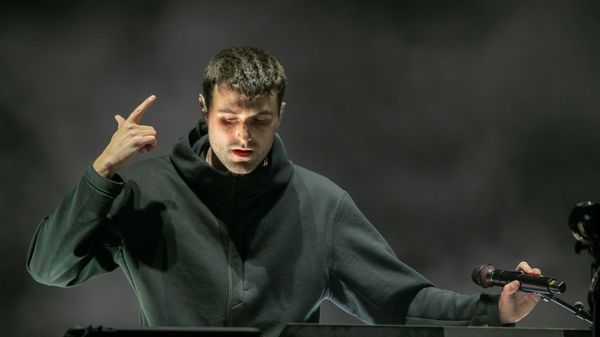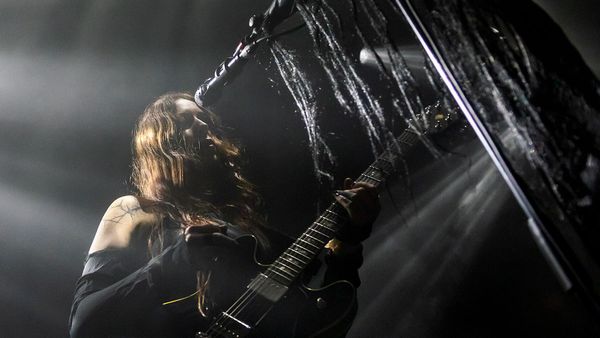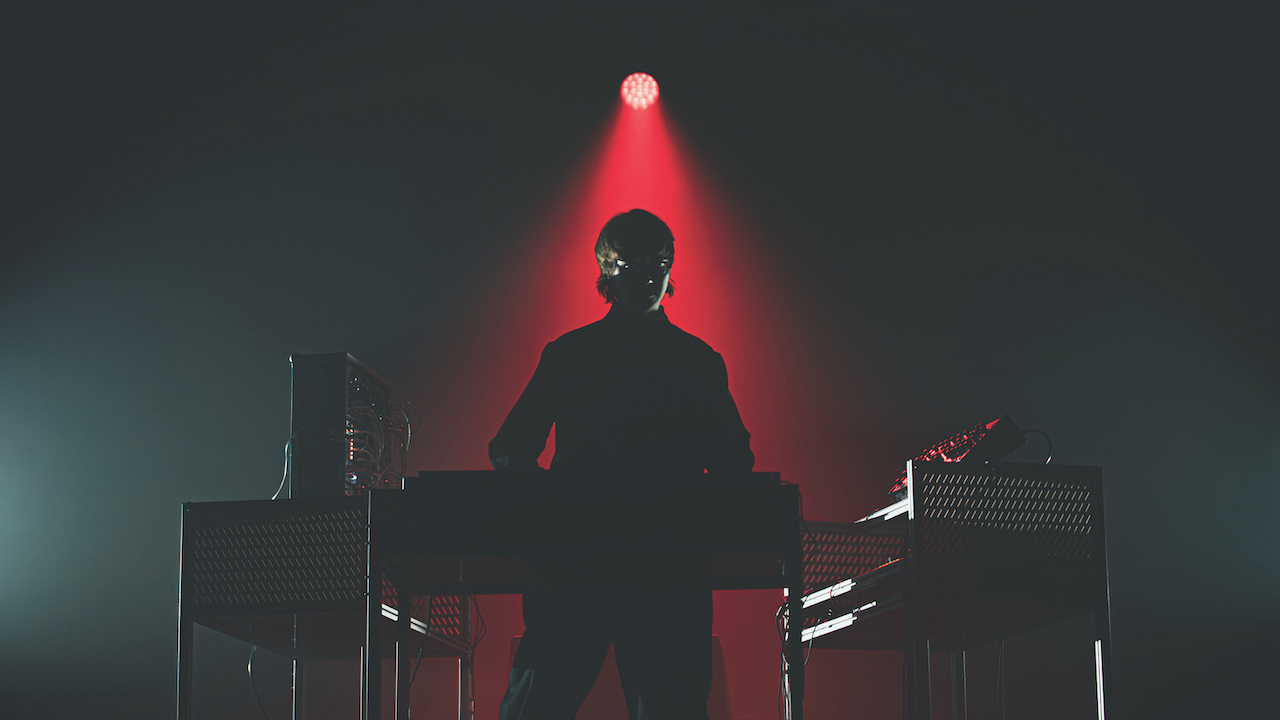
It’s becoming increasingly common to find electronic artists and creatives having a hand in the development of the types of creative tools they themselves want to use.
It’s often the case that those questing, idea-filled creatives are used as the originators of concepts that product development teams would never hit upon themselves.
In the case of BLEASS Software, working with respected French DJ and producer Canblaster when building the ingenious BLEASS Arpeggiator led it to create a plugin far beyond its initial concept, and one that snapped into Canblaster – aka Cédric Steffens – chance-based workflow perfectly.
We spoke to Cédric to learn more about this collaboration, his upcoming three-part record and how using his regular livestreams helps keep him creatively productive.
Firstly, can you give us a bit of an overview of BLEASS Arpeggiator and what it brings to the table for creative producers and artists?
“I think the main idea was to change what arpeggiators are. For me, it was a process of going back and forth with the BLEASS team and put every idea we could put into this. There are so many different ways of playing the arpeggiators that we tried to find by either analysing ways that the players play on the keyboard, or how classic sequencers were used. Then there’s a whole part about the rhythm of the arp which was one of the main focuses for me.
"One of the main problems I think with most arps is that the rhythm is unchanged. The idea was to implement silencers in the arp to create some holes and new rhythms using a mix of polyrhythms. The Trigger Mode is something I’m really happy with, it’s the idea that you’re able to control the rate at which the plugin steps through the pattern of notes.”
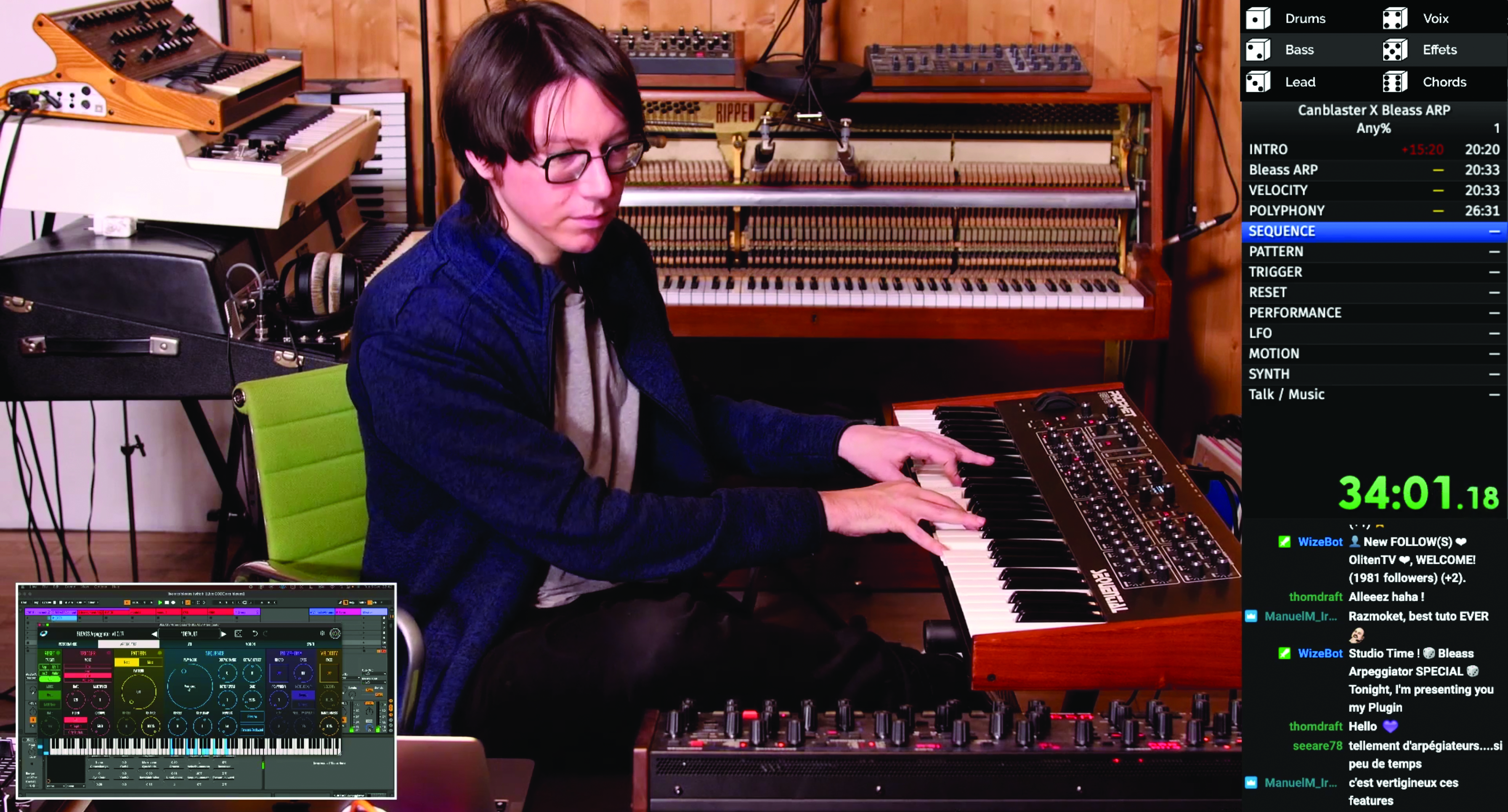
When did you start working with BLEASS?
“So they are from the north of France, just like me. One of the guys from the team is a good friend of mine, he was actually the guitarist for my very first band from maybe 20 years ago. I only learned that after starting to work with them. We had several ideas for products we could work on together.
“One of them was the arpeggiator, but it was very basic at that time. They had a few implementations that were interesting. I had some that I really wanted to do, so we just started going back and forth on the development. We got in contact initially through my label, they knew them from a long time ago.”
Was it the case that you were working with a rough version, and telling them what – from an artist perspective – you wanted to see?
“Exactly. Half of it was beta testing and the other half was me proposing ideas, like ‘what if it could do this or that?’ The Trigger Mode idea I had for a long time. The idea was ultimately built around holding a chord with my fingers and then as I go, have a rhythm that was triggered from another track that I could play with using my left hand, then my right hand could move the chord.
“I didn’t find anything that could do that. I tried to do that a long time ago in lockdown, I found a Max for Live arpeggiator device but the integration wasn’t quite there. I use Trigger Mode more and more, I spent so much time developing it but now I can just use it when making songs, it’s nice to finally be able to do that. It’s a pleasure to have all these ideas and a perfect tool to play them through.”
Are you going to continue working with BLEASS, and developing tech more generally?
“Yeah that’s really a goal, I’ve become a partner of BLEASS so I’m very excited about the future. There were a lot of things that I didn’t have the time to implement into Arpeggiator – there’s always the ideas you keep for later, so I think for them it was a success. We’re probably going to do Arpeggiator 2 down the line, I don’t know!
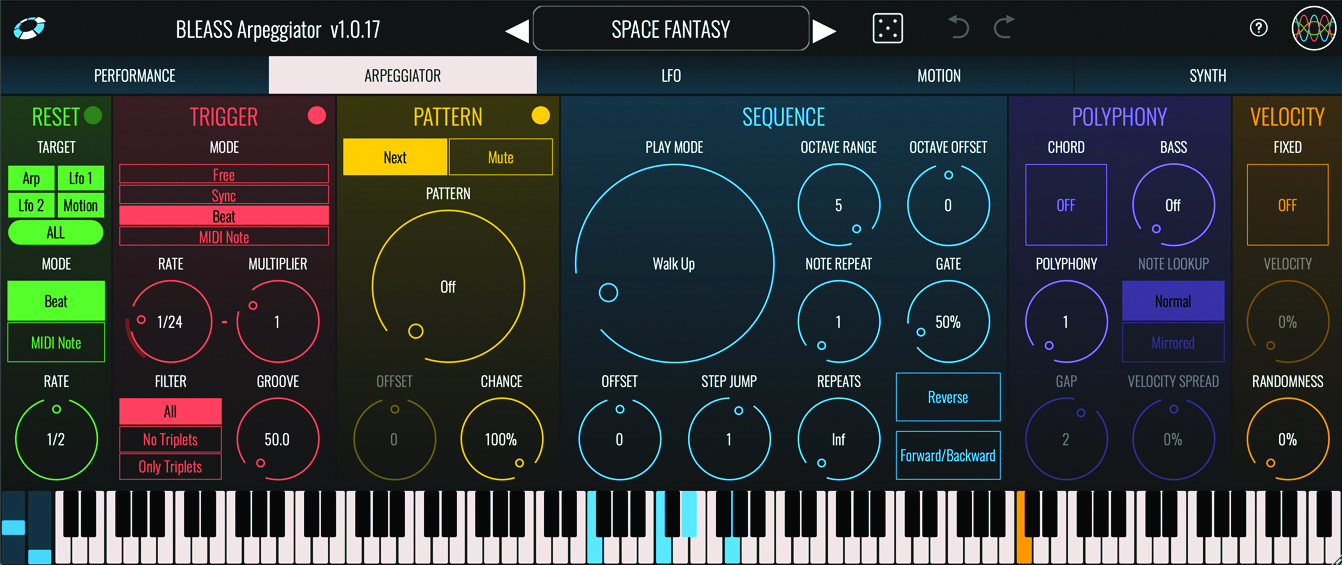
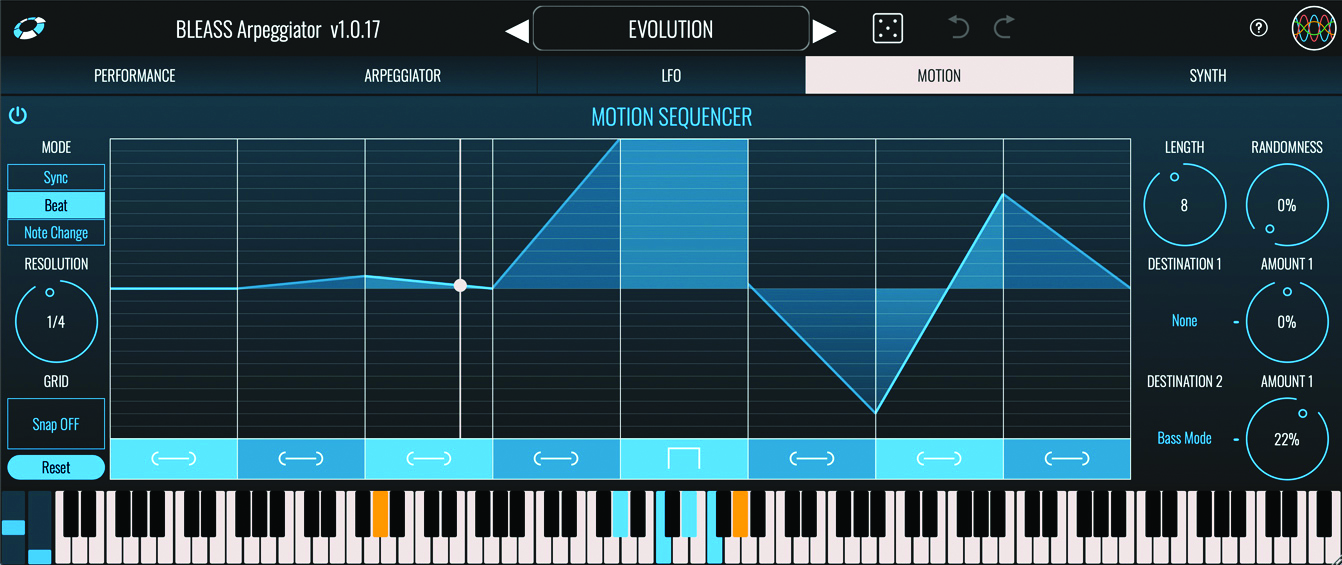
“There are a few tweaks that I’d be happy to make to Arpeggiator so I’m sure updates might happen that implement those. Things I’ve discovered from using it all the time in my workflow. It’s normal though, I’m really happy with it.”
In your workflow, what is the balance between hardware and software?
I use a lot of plugins, and my goal is to go as hybrid as possible. I never sequence from my modular
“I do use a lot of plugins actually, and my goal is to really go as hybrid as possible. I almost never sequence from my modular. I have a lot of MIDI tools – that’s why getting this plugin right was so important to me. I use a mix of sequencers, arpeggiators, random notes – I’m very inspired by the tracker mentality. Arpeggiators are really important to me, so you can see why it was super important to work with BLEASS. The randomness with the control of parameters is very present in their universe.”
You recently released Genesis, a really beautiful and epic mixtape, and we hear that recently you’ve been locked in the studio working on new music. What can you tell us about this process?
“I was finished with my old band, where I was a keyboardist. When the band stopped I felt like working on finding out what was interesting to me. I wanted to create a live show. It took a lot of time to find a process of translating what I was making in the studio to the stage. Also it’s funny because as I was creating the idea and as the concept of the next album, Liberosis, was developing.
"As I was working on it, I had more and more modular gear and the tools became more efficient, I found ways to do some stuff that I couldn’t do that I’d had in mind for say four or five years. At some point I remember having a lot of different MIDI tracks sending different messages, just to be able to do what I wanted with different speeds and LFOs and stuff – it was very complicated, but now with BLEASS Arpeggiator, I don’t need that anymore.”
How would you say your writing has developed over the last few years as a creative artist, and do you still consider the club/live impact of tracks?
“I still love the club, of course. Every time I have the chance to DJ on a good setup I really enjoy it, and that’s what I was doing a lot of when I was younger. I think playing live [more generally] gives you the freedom to break from the rhythm completely or do a tempo that you wouldn’t dare in a club [when DJing], or would be less interesting – that is cool too.
“If you have a really good synth part that you want to play live without drums, and just focus on the playing of the keyboard and arpeggiating you can do that, otherwise in a club you’ve just got to keep the rhythm going.”
What DAW do you use?
“My main DAW is Ableton Live. What took me the most time was reaching the balance of a setup I wanted. My main setup is built around the computer with Ableton Live running, I have my modular of course, which can change a lot – I have the Expressive E Osmose. Some of that team also come from the north of France.
“My go-to synth is the Sequential OB6. The idea is really to go back and forth – to have the computer sequencing the synthesisers and then the synthesisers being destroyed by plugins – creating a weird conversation between them all. I think that’s the reason why so many people ask me how I make my sounds.”
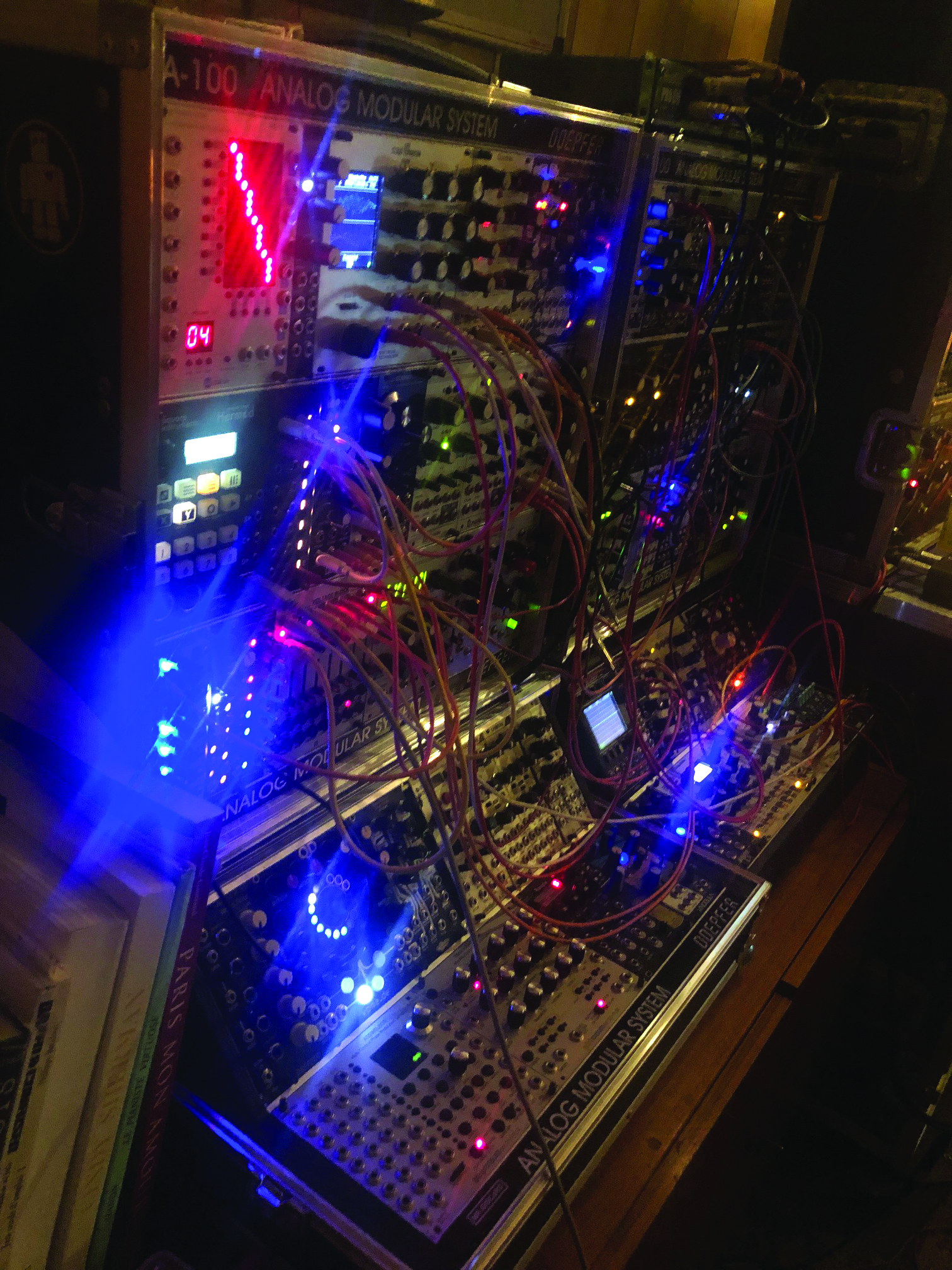
When did the modular obsession begin? Has that always been a fixation?
“Really, it was at the end of the band and when I started researching into more synths. I was a little too comfortable with what I was then using. I lacked the element of surprise when I first started – when you buy your first synthesiser and you tweak a few buttons. When you don’t really know what ADSR is! I needed that kind of feeling of discovery. To be surprised by the sound I heard. To find some sounds that I don’t know how I made myself. Then to understand them and then to reproduce them – that was the game when I started modular, you know.
Playing live gives you the freedom to break from the rhythm completely
“Quite close to me in Paris is the main modular shop [Modular Square]; the dealer lives upstairs and anyway, as soon as I bought a few bits, I had a few friends lending me additional stuff. My first case and modules were given by others. That’s one of the great things about modular, you find a lot of help and communication in the industry. It’s about exchanging.
"I’ve visited a lot of different modular-based studios, what I’ve found interesting is that nobody uses it quite the same way. They might use it to make saturated noises, or ambient sounds and tones. They all have their philosophy and their background. There’s so much you can do with it, you can do synths with the modular, but then you can do beats with the modular and envelopes and precise stuff. You see what you like and what you don’t.”
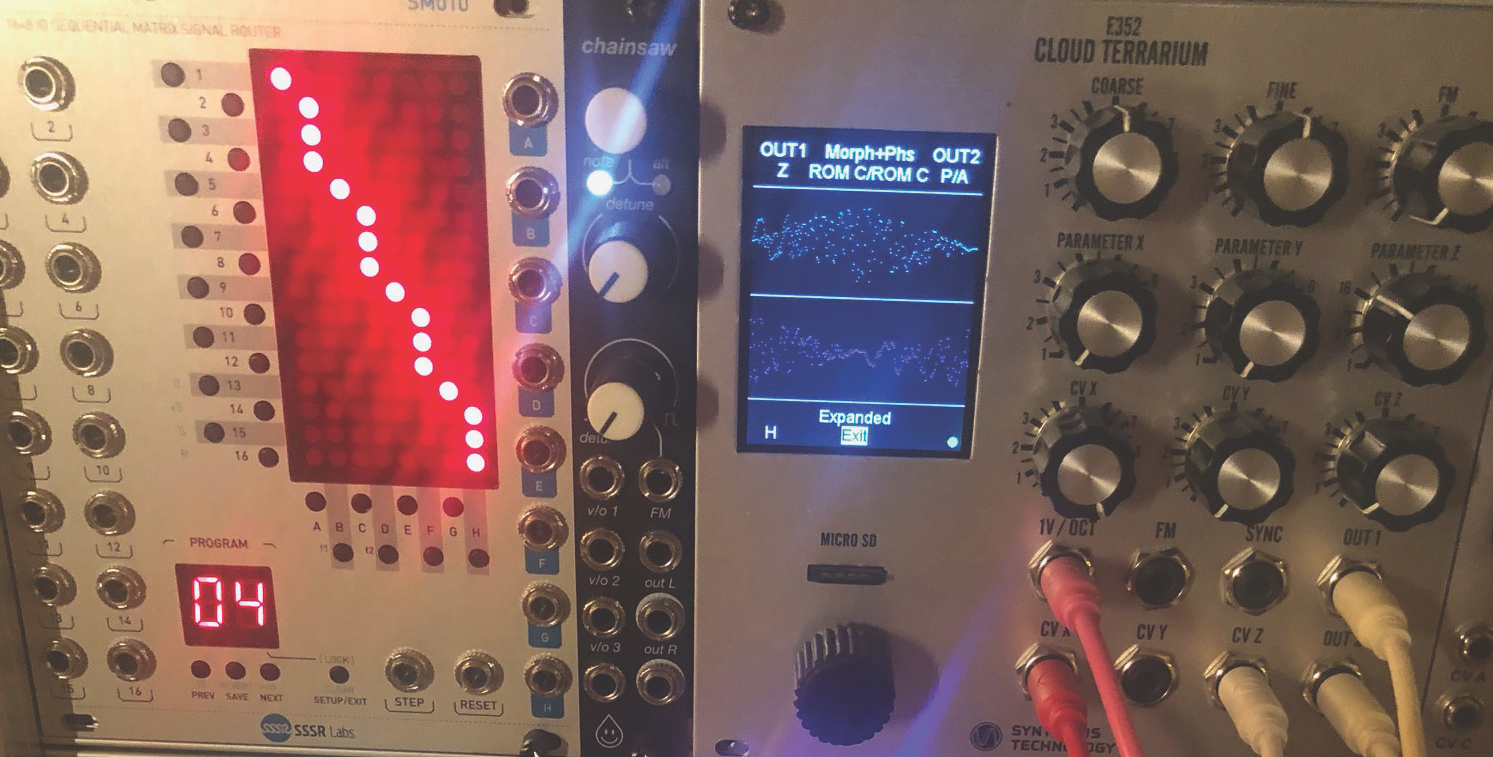
Your upcoming record, Liberosis, will be released in three parts, why did you decide to do this and how many tracks will there be per-part?
“There’s six tracks per-part, 18 tracks in total. Basically, Liberosis is an album that has taken me three years to complete. The mixtape Genesis was kind of like the outtakes from the album. I played a lot of them on my Twitch sessions. I do a weekly session which is called The Dice Game – it’s all about randomness and experimenting with stuff, interacting live with my friend Jacques.
"It’s mostly tracks that I wrote once I found my balance with the gear that I told you about. With my hybrid setup. I took the best of that. I love having that Twitch space to experiment, and build a little community. I often tell my Twitch audience that I use them as an excuse to be productive. Otherwise I take ages to finish stuff, and having a weekly meeting is a good thing. I occasionally have guests over, and we make songs in one week together. I can have a lot of different guests from different styles – like jazz, flute players or modular nerds. Anyone can come and we can find a common ground. That’s what I really like.”
Which track on the new album took you the longest to get right would you say?
“Most of it was done in a three-year span. There are one or two that are older than that. On Genesis, for example, the track called Lost Feathers was done in a session five years ago, and then there’s one on the album as well which is in the third part of the album. It’s a track that I did when one of my friends lent me a Roland Jupiter-8.”
Will you be doing much live work to promote the release?
“Yes, I did my first opening show in a festival in France called Trans Musicales, that was quite emotional. Usually you do some warm-up gigs to test the set-up and make sure everything sounds good. That was my first show in front of 5,000 people. It was really great – the people loved it and everyone from my crew was really happy. It was the first time I was playing the album before anyone else had heard it.”
Can you remember back when you first started, what made you want to become a musician and producer?
“I was really doing it for fun, my first DAW was Music 2000 on PlayStation. I’ve been classically trained until I was 13 or 14 and at night I would just play on my PlayStation, but those things were quite separate.
“When I started making music in my teens I was very computer-based, and just used a mouse mainly. It took me a long time to plug a synthesizer into my computer. That’s funny, but that’s how it happened. What really got me started doing lots of music was the rhythm game scene, which is basically like arcades when you’d have those dancing machines, or fake guitars and stuff like that.
“My very first song that I created as an actual job was a song for a dancing game. I started with FL Studio, but back in the day it was version 3 or 4. With that I started doing this music for video games. Around 2007 some really interesting things were happening in France in terms of electronic music. It was the comeback of Daft Punk – a lot of Parisian labels were really innovative back in the day.
"Glitch music was big. The whole club was dancing to it. I realised there was a link between this kind of club music, IDM and video game music. There was a path that opened between these two. It made me want to become the one playing the music in the club. This led to the formation of [innovative Parisian collective] Club Cheval. Myd and me were in one school and [other members] Sam Tiba and Panteros were in a different school. We came together and created Club Cheval.”
How much time do you typically spend in the studio?
“I basically work at night, so I’m in the studio from 8pm – I share the studio with a mixer. My finish times can vary, sometimes it’s midnight and sometimes it’s 5am. I have to carefully balance my social life. Now the album is done I can hang out a little bit more!”
What’s next on the agenda for you?
“It’s the album launch and the live shows – the live side is really going to be my main focus this year. Building my Twitch stream, hopefully doing more things with BLEASS. We’ve already started talking about it. I feel like I’m 90% finished with Arpeggiator, there’s definitely more I want to add to that. I’m working on new tracks and pushing the idea of opening up my studio and sharing my process more. I’ve been alone for a long time working on this album, so now it’s time to open up and work with more people.”
For more info on Canblaster and to watch some of his regular streams head to his Twitch channel and find more info on BLEASS Arpeggiator here.







